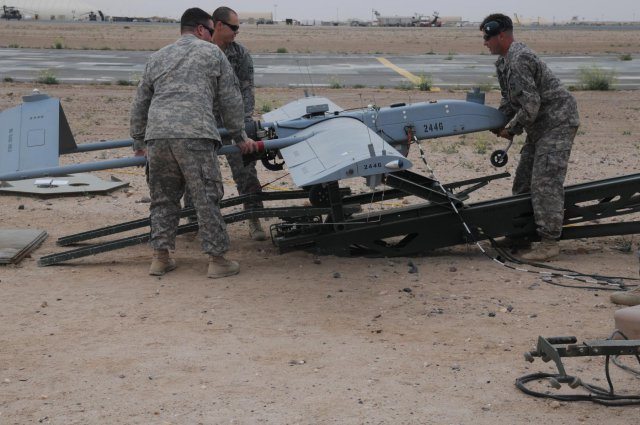Getting a clearer picture of the enemy helps Soldiers more effectively accomplish their mission, and Army National Guard Soldiers deploying through the Camp Shelby Joint Forces Training Center here, have a new intelligence tool to help get that picture.
Dubbed the Company Intelligence Support Team, or COIST, workstation, Soldiers have access to a One Station Remote Viewing Terminal, or OSRVT, a Tactical Ground Reporting, known as TiGR, system and other tools to better assess their environment and keep Soldiers safer.
“Our new COIST workstation has proven to be extremely valuable as a way to reinforce the Intelligence Warfighting Function at the company level,” said Lt. Col. Chris Kuhn, commander of the 3-315th Engineer Battalion, First Army Division East. Kuhn’s Soldiers oversee training on the COIST system. “We can do an initial analysis based on the last 30 days of significant activities and add in new data into the workstation for the current situation.”
First Army Division East partners with Army Reserve and National Guard leaders to advise, assist, and train reserve-component units to support overseas military operations. Observer-controller/trainer strive to ensure mobilization training is relevant, realistic and reflects the most current conditions Soldiers will face in theater.
The COIST workstation, introduced in March 2013, by the Camp Shelby-based 3-315th Engineer Battalion, 158th Infantry Brigade, First Army Division East, can also access real-time aerial reconnaissance video feeds from a RQ-7B Shadow unmanned aerial system, or UAS.
“A UAS feed gives units patrol overwatch (for convoys),” said Sgt. 1st Class Jason Thomas, a senior Counter-Improvised Explosive Devices, or CIED observer-controller/trainer at Camp Shelby. “This is crucial for early warning of threats. Intelligence teams are able to communicate with the UAS operator and the convoy patrol leader.”
The remotely-piloted RQ-7B Shadow is used by the Army and Marine Corps for reconnaissance, surveillance, target acquisition and battle-damage assessment. The Shadow has a 14-foot wingspan and stay aloft for up to six hours of flight.
Based on all the information pre-posted in the COIST workstation, intelligence teams can quickly synthesize the information into a complete intelligence brief that describes terrain and weather effects as well as enemy forces and tactics.
Operators at the UAS Regional Flight Center also benefit from First Army coordinated CIED training.
“Mission planning with ground units is often absent from UAS operators’ training at Camp Shelby,” said Maj. Jay Lovelady, former officer in charge of the Mississippi Army National Guard UAS Regional Flight Center located at Camp Shelby. “Providing First Army our UAS coverage at Camp Shelby is a perfect opportunity for our UAS operators to get more realistic training.”
Overall, the introduction of COIST into CIED training reinforces the importance of intelligence in company operations, which pushes the unit to a higher state of readiness earlier in their training at Camp Shelby.











